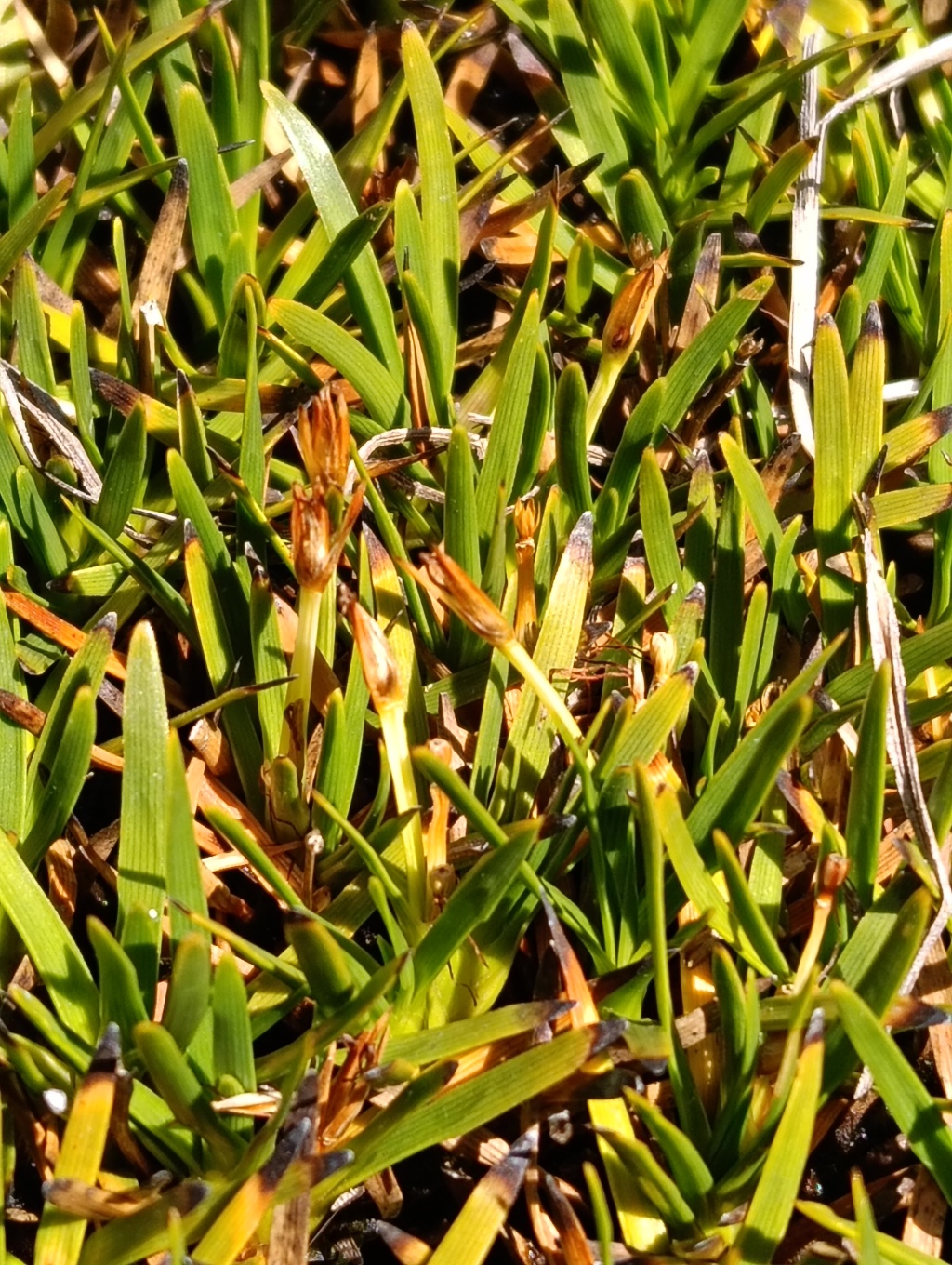Oreobolus
Small, rhizomatous, glabrous perennials, forming dense mats or cushions. Culms trigonous, very short, mostly hidden amongst leaf-sheaths. Leaves numerous, often flattened and distichous; sheath open, with apex often produced in small rounded auricles; pseudopetiole slightly concave to channelled, narrower than sheath or blade, rigid; blade slightly twisted relative to pseudopetiole, rigid, flatter than pseudopetiole. Inflorescence small, often ± concealed among leaves, consisting of 1–6 spikelets on short branches at 1–3 nodes; involucral bracts leaf-like, with closed sheaths. Spikelets compressed, with a single bisexual flower; glumes 2–5, the lowest glume longer than others; hypogynous scales in 2 alternating whorls, flat, persistent on rachilla after nut falls; stamens 3; style 3-fid. Nut trigonous to terete, smooth.
14 species occurring at high-altitudes in Australasia, South America, Malesia and Pacific islands; 5 species in Australia, represented in NSW, Victoria and Tasmania.
Leaf-blades often have distinctive patterns of longitudinal bands of stomata (visible as whitish dots with a hand-lens) and faint to obvious longitudinal ribs on the adaxial surface.
Wilson, K.L. (1994). Cyperaceae. In: Walsh, N.G.; Entwisle, T.J., Flora of Victoria Vol. 2, Ferns and Allied Plants, Conifers and Monocotyledons, pp. 238–356. Inkata Press, Melbourne.
 Spinning
Spinning
